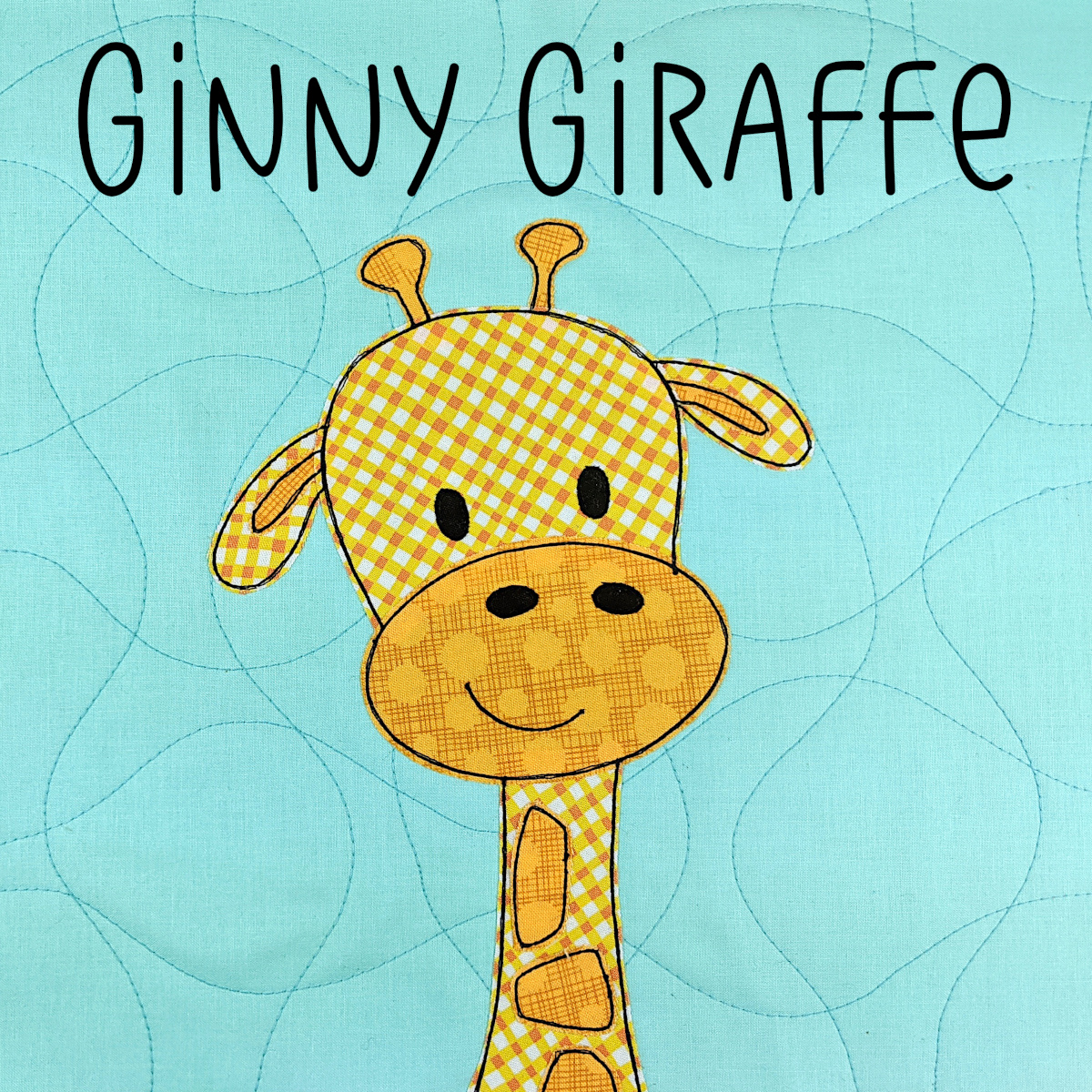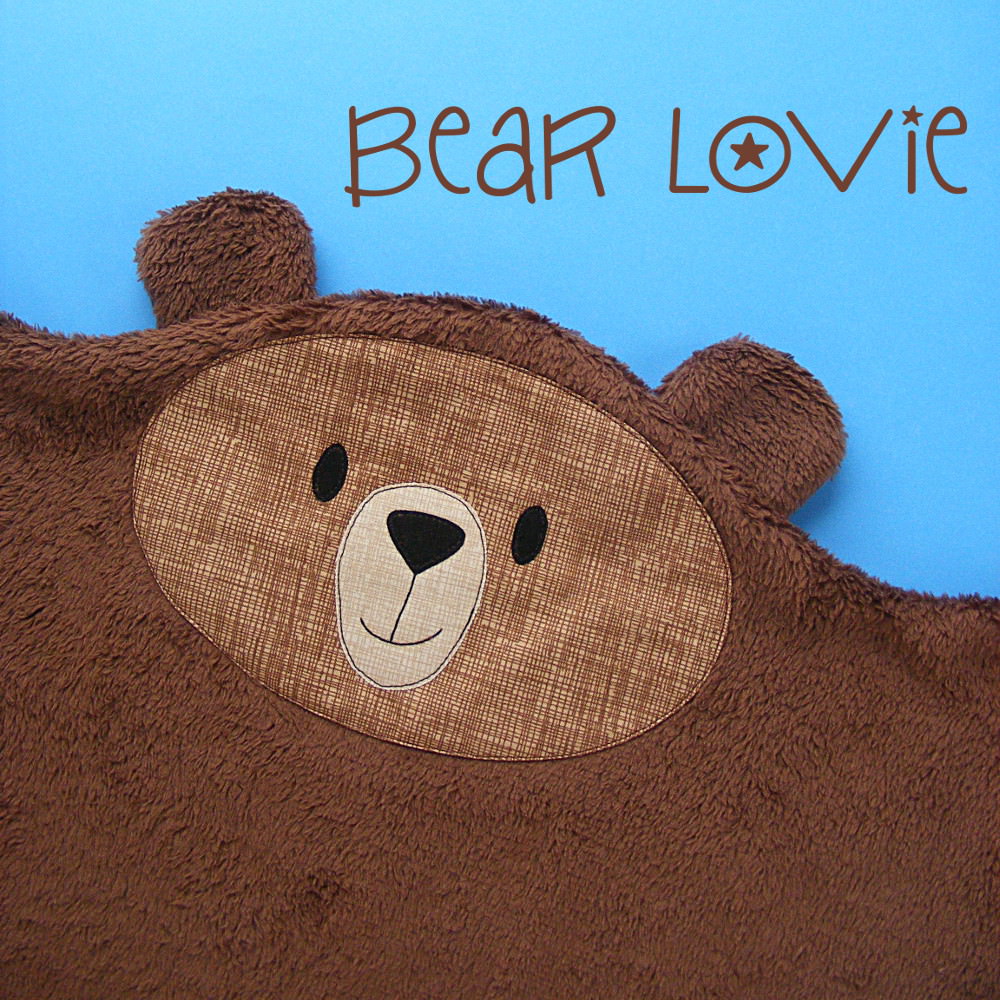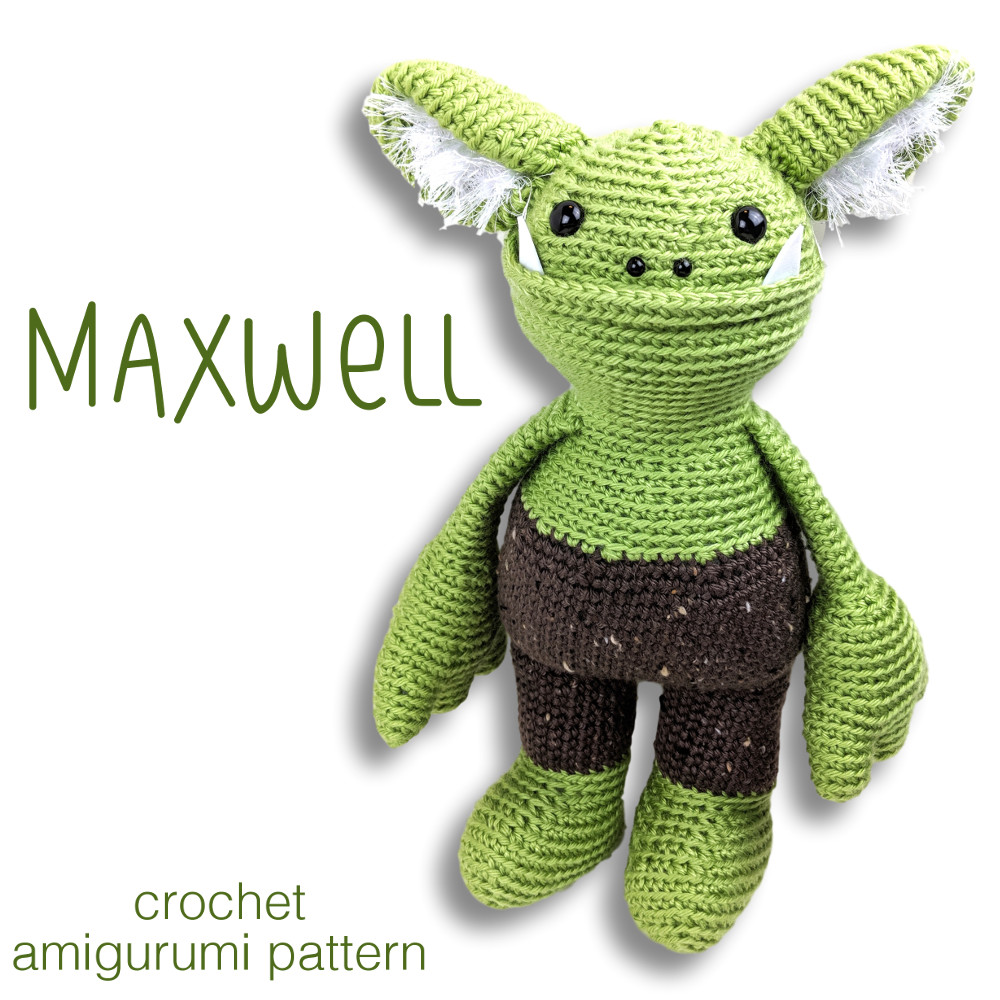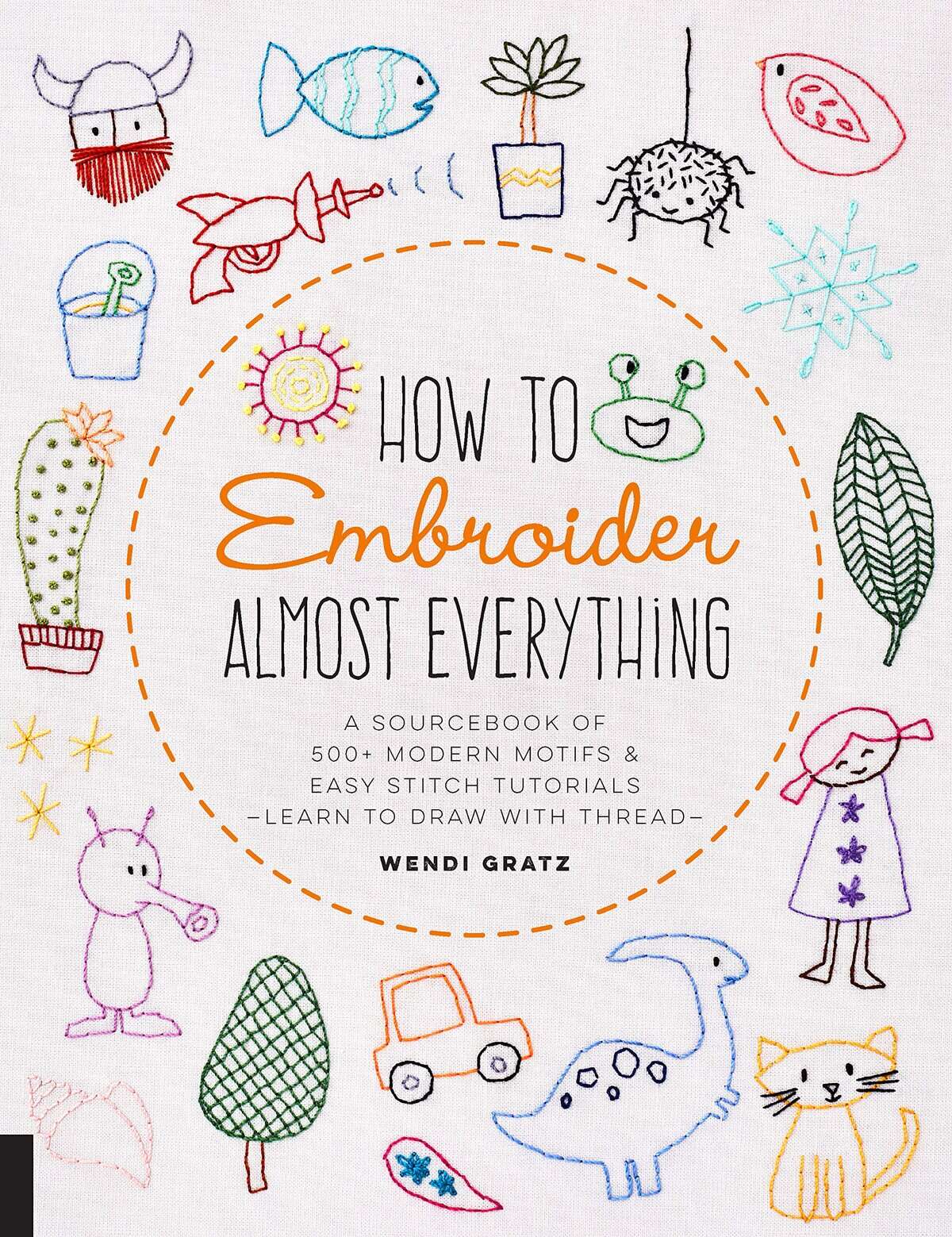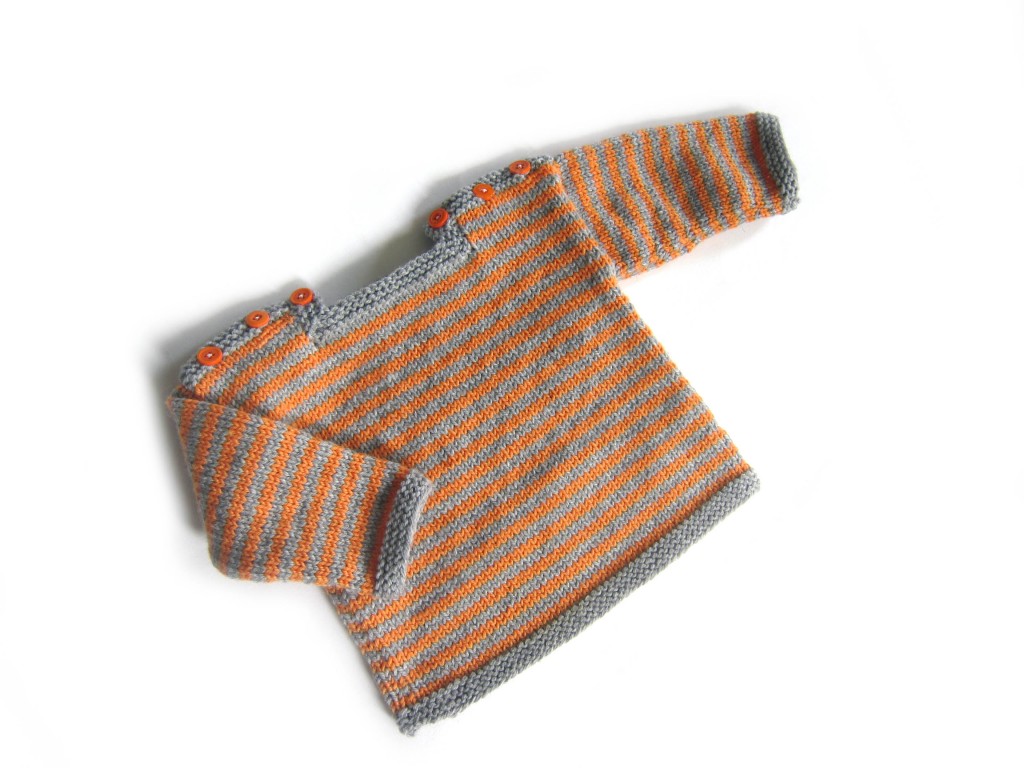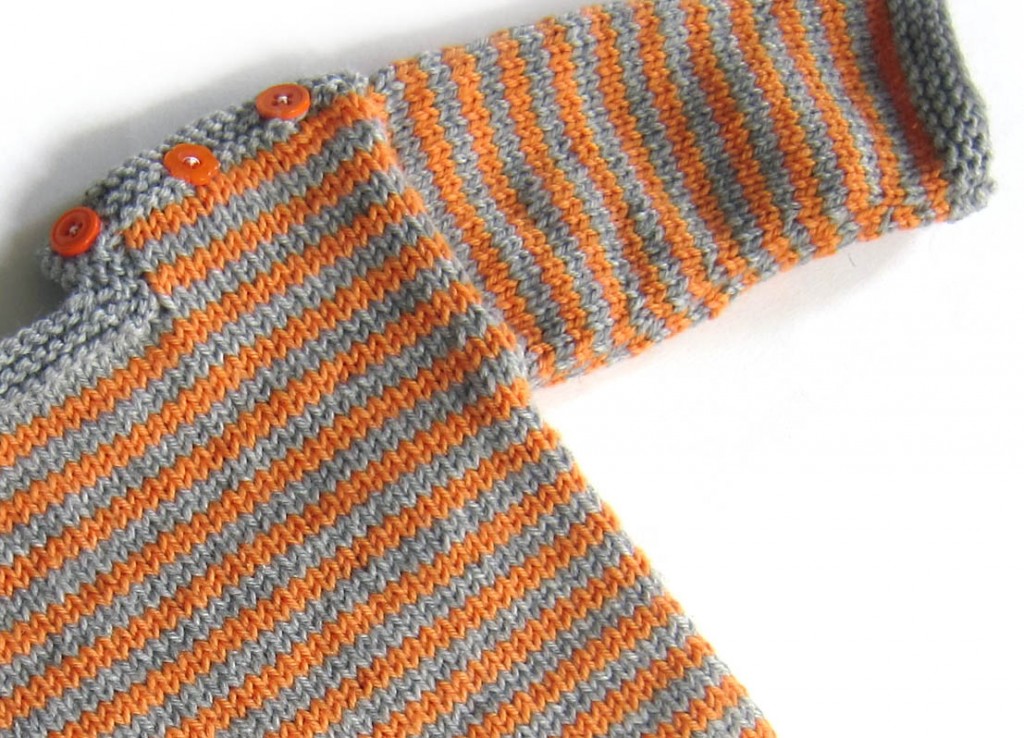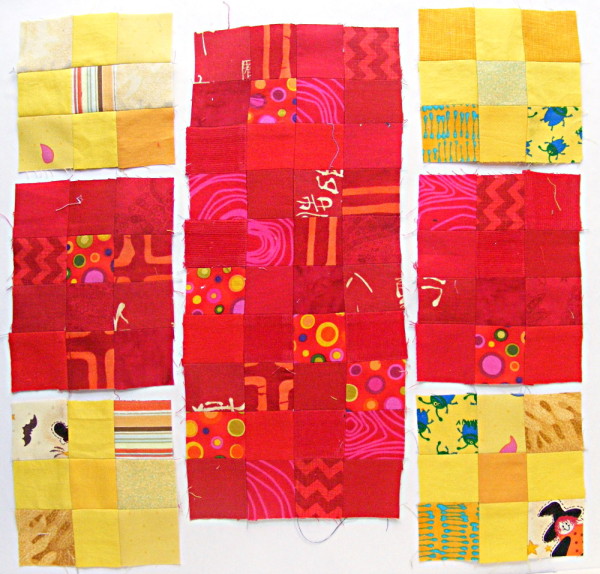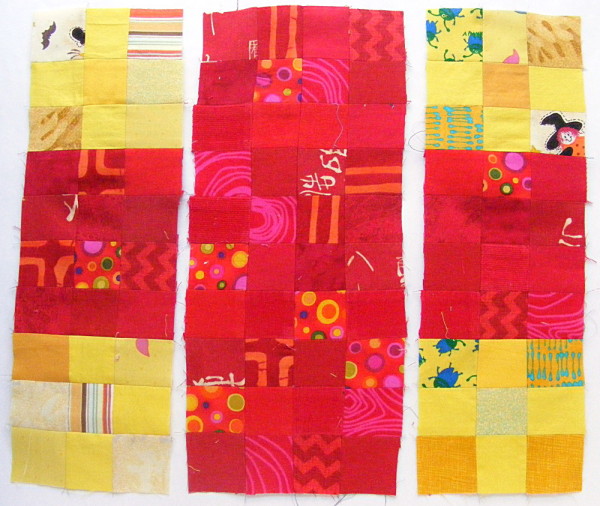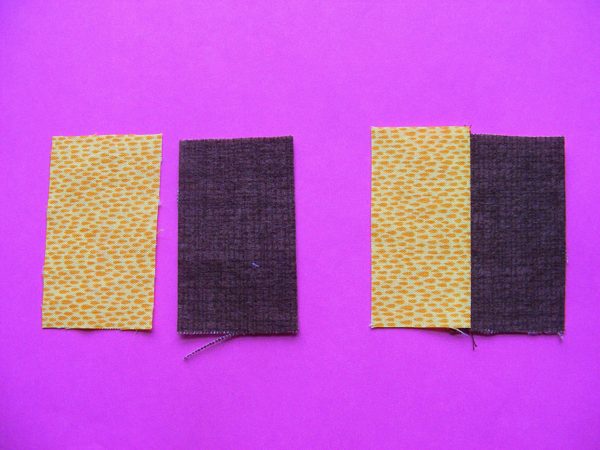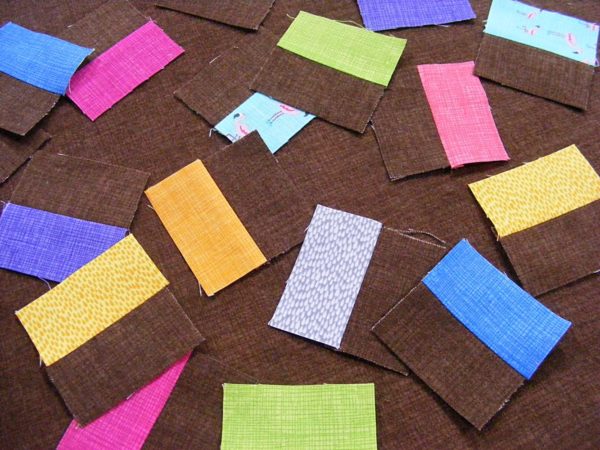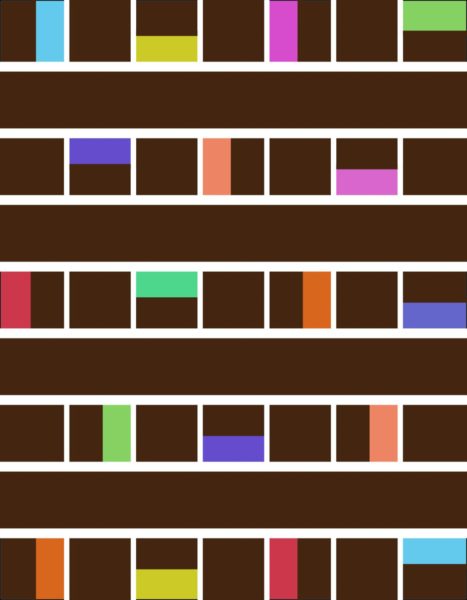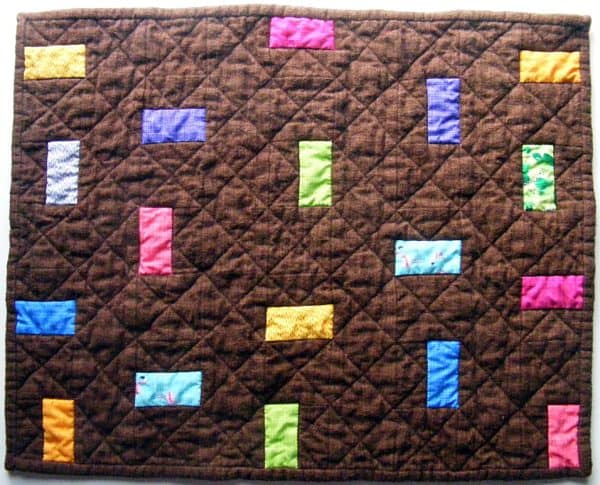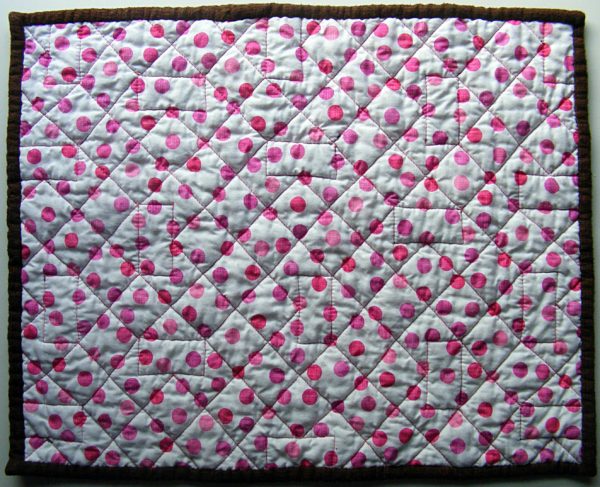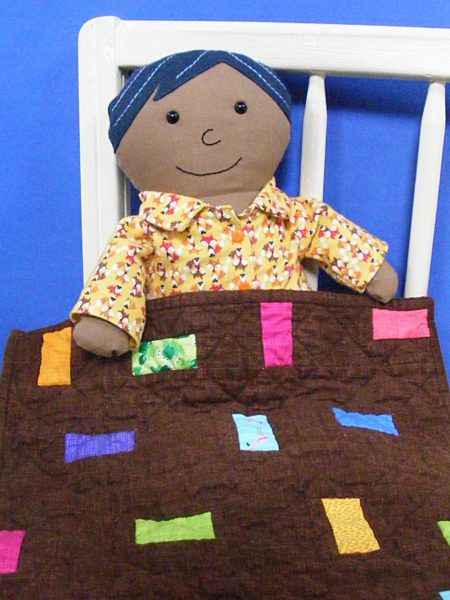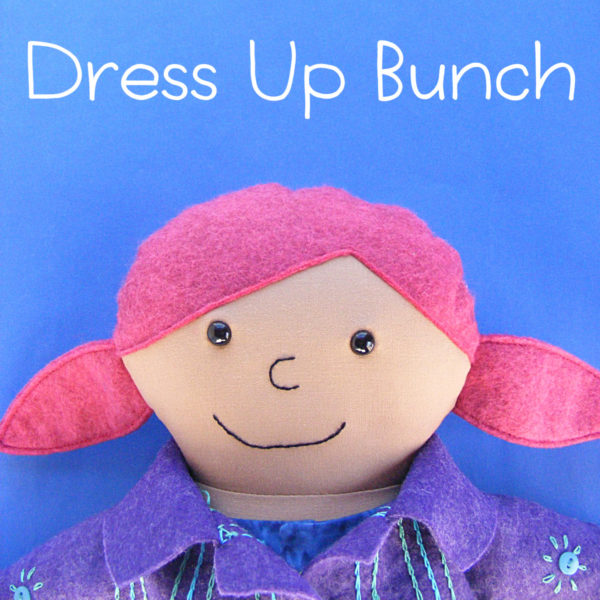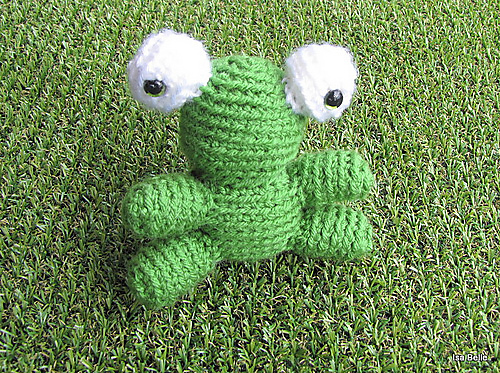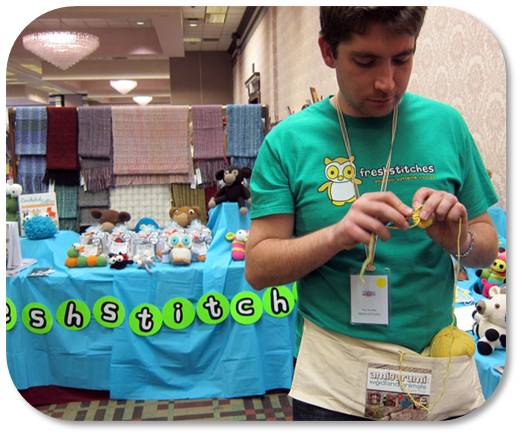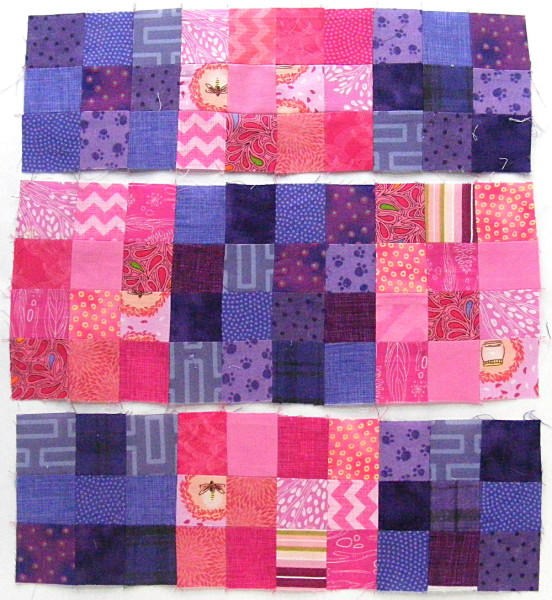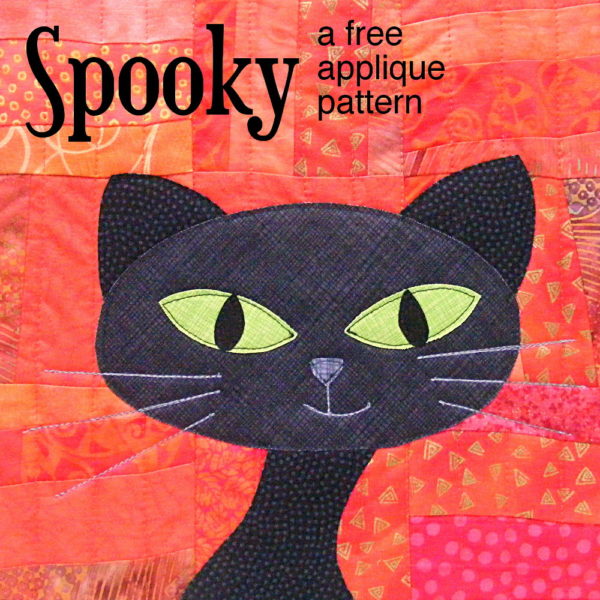
You can add this free cat applique pattern to your Cuddly Cats quilt pattern if you like. I designed it especially to have really terrific eyes for a black cat – but you can make it any color you like.
I love black cats! I grew up with two of them – Nasty and Gandalf. But it can be tricky to applique the eyes on a black cat. Almost all of my animals in all of my applique patterns have simple black oval eyes. That helps give all my designs a cohesive look – and they’re also simple to applique. But what if the animal you’re making is black? Black bears, black panda eyes, black raccoon eyes, black penguin eyes, and, of course, black cat eyes.
This post shows you a quick and easy trick to applique dark eyes on dark faces. But I really love black cats and I really wanted to make a free cat applique pattern with big, glowy cat eyes.
So I did!
Especially for Halloween, I created this spooky black cat applique – a single block applique pattern – with huge luminous green eyes. I love her! And the pattern is the same size as the blocks in the Cuddly Cats quilt so you can mix and match if you like. 🙂
There’s a tutorial here with instructions for making a hanging sleeve so you can make your block into a Halloween wall decoration. It’s easy!
Here’s how to make the block. (This video shows all the steps for working with fusible adhesive – if you’ve never done it before you’ll find it helpful.)
Step 1
Download the template pieces here.
Step 2
Trace or print the pattern onto the paper side of the fusible adhesive.
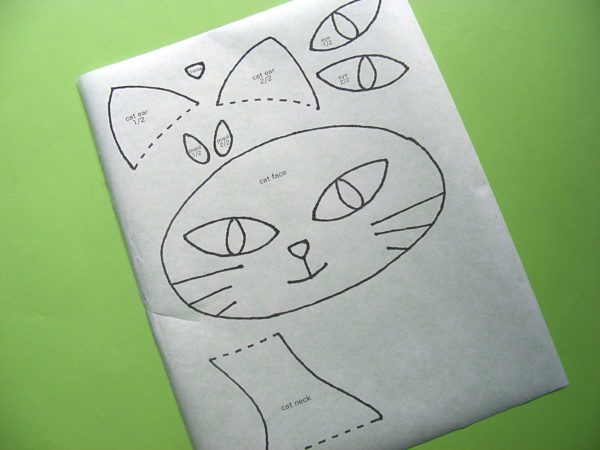
I use Heat & Bond Lite printable fusible adhesive sheets so I just printed out the page. No tracing!
The image has already been reversed, so just trace or print. If you’re tracing, be sure to trace the facial features too. You’ll need those for Step 5.
Step 3
Rough cut around each shape and fuse it to the back of your fabric.
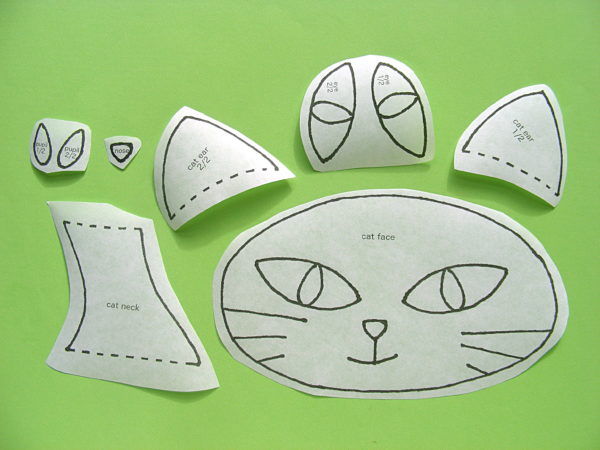
Leave a little bit extra all the way around - a little extra extra (at least 1/4 inch) where there’s a dotted line, like the top of neck shoulders and the base of the ears.
Step 4
Cut around each piece neatly. Cut directly on the solid lines.
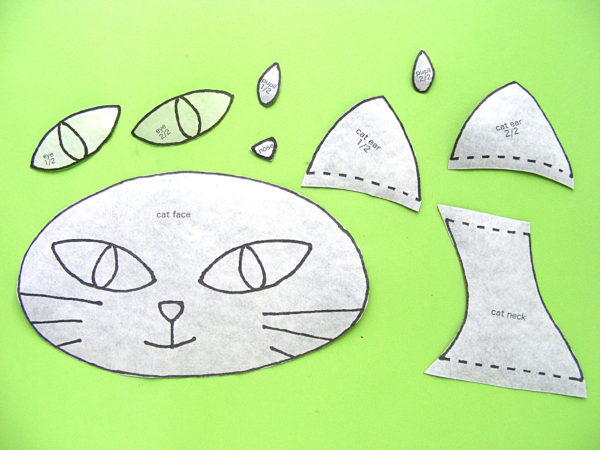
Leave a little seam allowance on the dotted lines - the top of the neck and the base of the ears will tuck behind the head.
Step 5
Remember when I told you to make sure you traced the facial features in Step 1? Now you’re going to use that. Hold the face up to a window so the light shines through it. You’ll be able to see the lines, and the adhesive will stabilize the fabric so you can trace on it without it crinkling up.
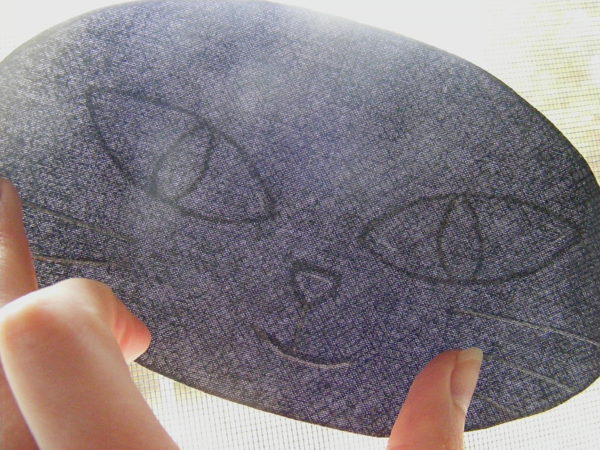
Since this is a dark fabric, I traced with a white chalk pencil.
Here you can see all the tracing I did – without the light shining through.
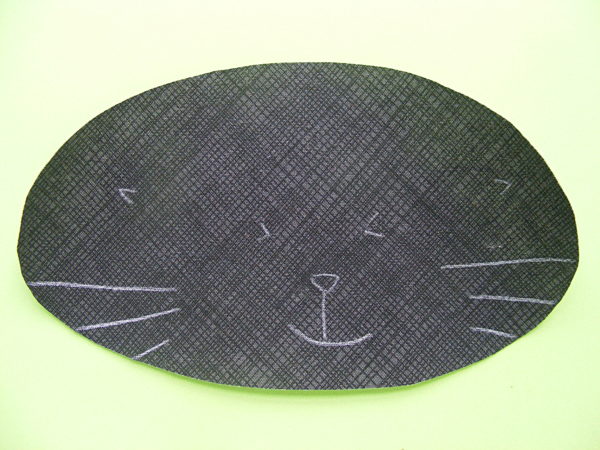
I traced the whiskers and mouth exactly, since I’ll be stitching over those lines. I traced the nose a little smaller, and just marked the corners of the eyes to help me position the applique pieces later.
Step 6
If you’re doing Quilt As You Go (I did) then you can quilt your block before adding the applique. So easy!
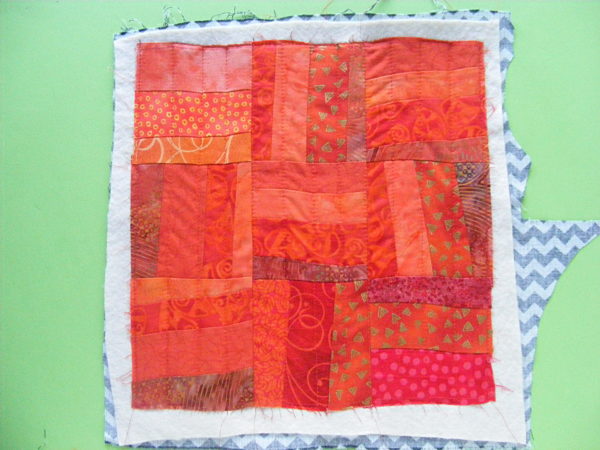
I used a bunch of orange scrappy strips all sewn together for a super textured background, but you can use just one solid square.
Cut your background fabric and a piece of 100% cotton batting 11 inches square.
Layer the block with a piece of 100% cotton batting. Quilt any pattern you like!
Find all the Quilt As You Go tutorials here.
If you’ll do the quilting later, simply skip this step.
Step 7
Peel off the paper backing and arrange the pieces on a background block. Tuck the ears and the neck behind the head.
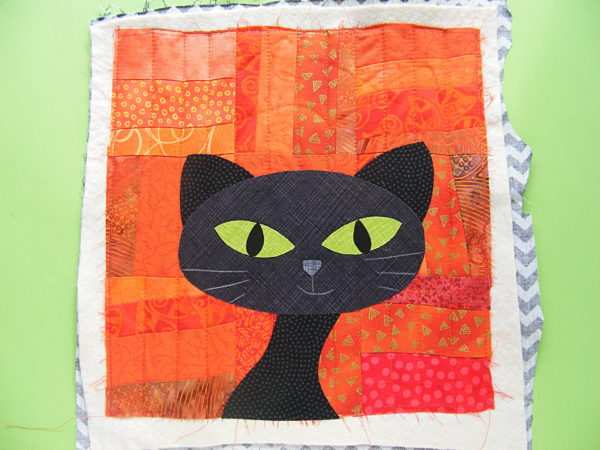
Remember - all the dotted lines indicate where pieces tuck behind other pieces.
Fuse the pieces in place.
Step 8
Outline all the pieces with black thread and a simple straight stitch – or choose your favorite decorative stitch.
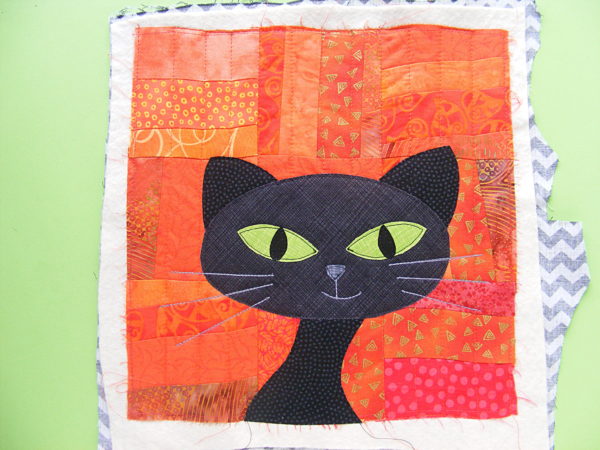
This video has some tips for outlining those tight curves.
Done!
One free cat applique pattern, all finished!
If you’re making a one-block project, go ahead and finish it up!
If you’re making a bunch of cats to join into a quilt - have fun!
Please share a photo of what you make! You can share it in the Shiny Happy People group or tag it with #shinyhappyworld on Instagram.
Happy stitching!


